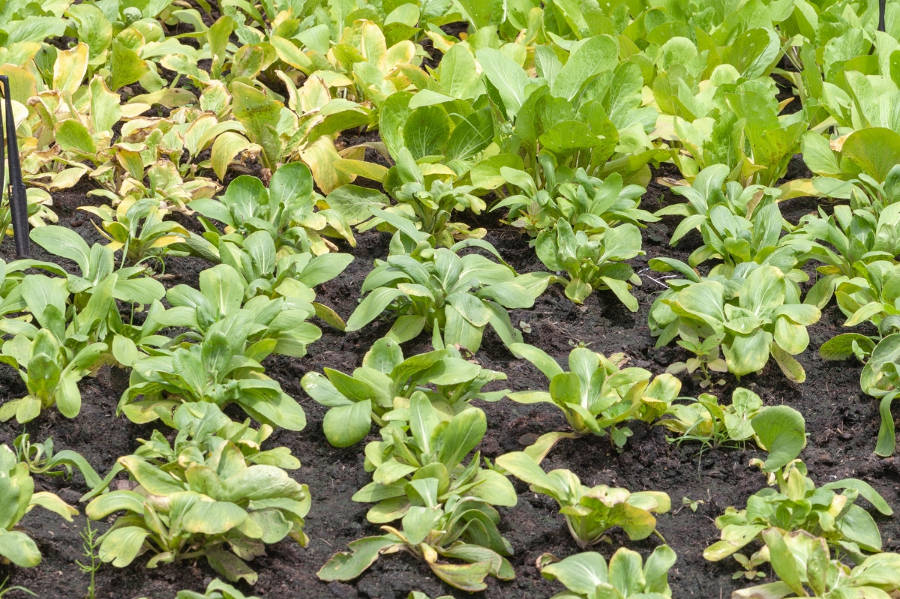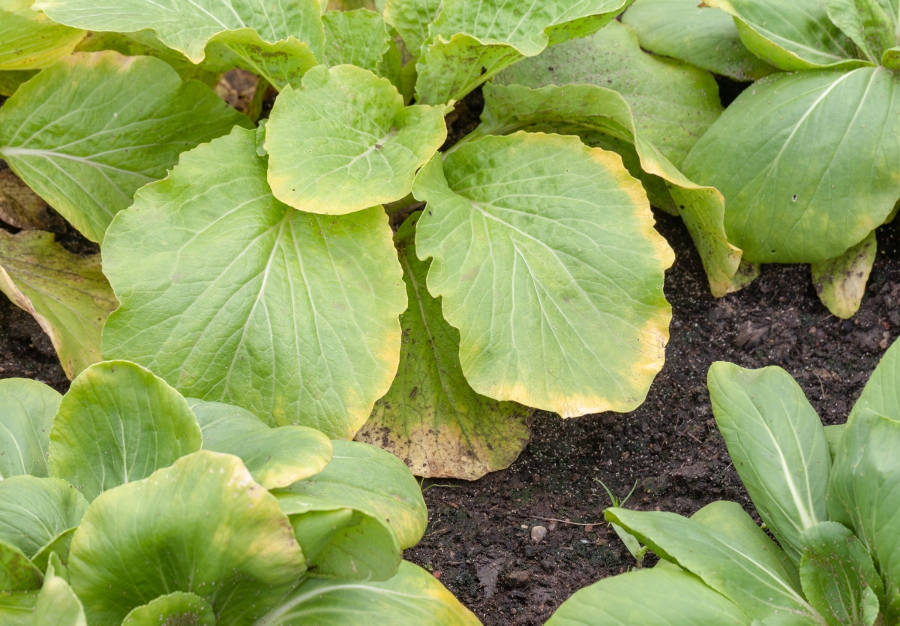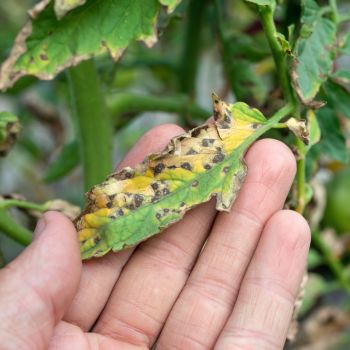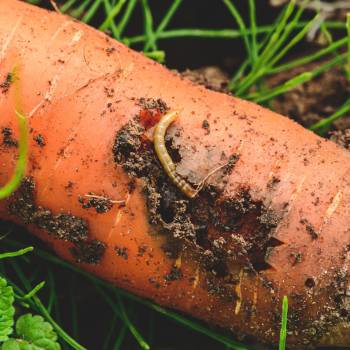Every veggie gardener starts the growing season with visions of luscious green leaves and pristine produce for the table. Unfortunately, things don't always work out that way.
By midsummer, you may find you're faced with a vegetable patch full of straggly, yellowing foliage which looks anything but ready for the kitchen.
Does this mean your crop is a disaster? Not necessarily. There are several reasons for edible leaves to turn yellow, and not all of them rule out a tasty harvest.
Natural Growth
The most straightforward reason for yellowing foliage is the natural growth patterns of a plant. As it matures, its growing energies are directed toward the younger, more productive growth.
The older leaves start to die away, having done their job of raising the seedling to adulthood. This yellowing is perfectly normal, and will tend to affect all plants of the same variety at roughly the same time and rate.
But if the yellowing is affecting the whole plant, and some individuals are suffering more than others, it's usually a sign of stress. There are several potential causes.
Watering Issues
It's obvious that plants need water to grow. What's perhaps less well known is that many plants react just as badly to over-watering as they do to drought.
Both too much and too little water can turn a plant's leaves yellow, so it pays to kick the knee-jerk hosepipe habit, turn off the automatic sprinklers, and give your veggies just the right amount of moisture each variety needs.
Bad Weather
In a similar vein, your veggies could be suffering through poor weather conditions. They could be getting too little sunlight, or baking in an uncomfortable glare.
Likewise, they may dislike the average temperature of their home, or be sensitive to over-strong breezes.
There's not a great deal you can do about your local climate, but you can position your veggies as best you can to give each one the conditions it prefers.
Nutrient Deficiencies
Several common nutrient deficiencies in your soil will turn leaves yellow, including low levels of nitrogen, iron, or potassium.
A reliable sign that nutrients are the issue is when leaves develop brown spots along their edges as well as yellowing or general loss of colour.
If you're worried your soil is lacking vital nutrients, you can confirm your suspicions with a home testing kit. You can then rectify the deficiency with a suitable fertiliser, and work on organic soil improvement to prevent future problems.
Soil pH
Another soil problem could be its level of acidity or alkalinity. Generally, veggies prefer a fairly neutral soil pH, and again, a home soil-testing kit will give you a diagnosis.
Diseases and Pests
And lastly, plants that are under attack from pests or disease will often start to yellow as they weaken. Check for any visible signs of aphids, caterpillars, or other pests, as well as spots of mould or mildew.
Can You Eat Yellow Leaves?
Yellow leaves don't necessarily need to be a disaster.
If disease is the cause, it's best to dispose of infected plants carefully just for caution's sake.
If pests are the problem, it's likely you can still eat the leaves - if you really, really want to. A moth-eaten cabbage may well be perfectly safe to eat, but for most people, the compost heap or chicken coop is the more attractive location.
However, for all other causes, there's no reason you can't still enjoy leaves that aren't the perfect colour. They may taste a little different to the greener leaves, but that's not necessarily a bad thing.
For example, some particularly bitter salad leaves are intentionally 'forced' as they grow, depriving them of sunlight to turn them yellow and sweeten their flavor. While your own yellow leaves may be unintentional, it's worth a nibble to see if the accident is a happy one.
And if the effect on taste or texture isn't entirely positive, you may be able to compensate in the kitchen. Maybe the leaves could be used in a stir-fry dish rather than a salad. Maybe you could push them in the direction of a pickle or fermentation jar, where strong and unusual flavors are more welcome.
But whichever way you use them, yellow leaves are still packed with nutrition. They're probably much healthier than typical mass-produced supermarket fodder, grown for speed and economy and then stored for days or weeks before reaching the shelves.
However, there's a limit to how far you should go in eating yellow leaves. Follow your senses and throw anything that's unappetising onto the compost heap. Better still, try and solve the problems which stressed your veggies in the first place, so that next year your yellow leaves will all be deliberate.







